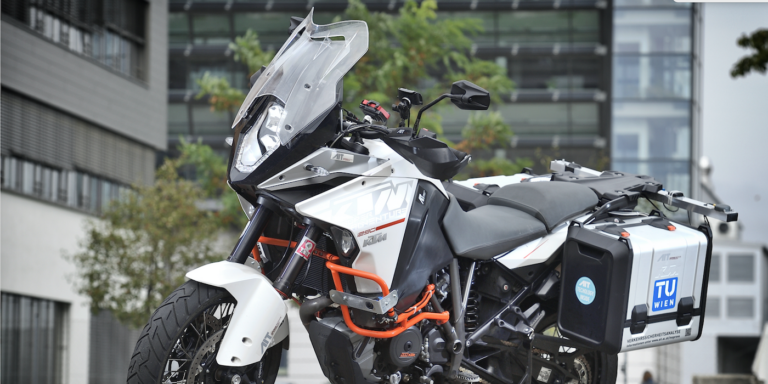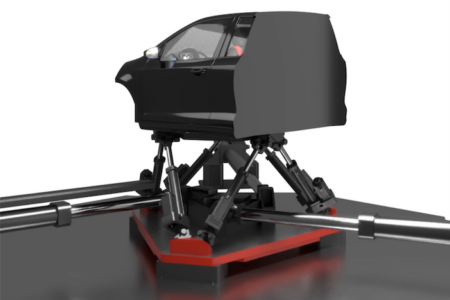The Austrian Institute of Technology’s (AIT) Center for Mobility Systems has reported the successful conclusion of its viaMotorrad research project, which has resulted in a novel measuring method as the basis for reducing the number of motorcycle accidents.
Research by the AIT team has found that the number of fatal traffic accidents in Austria has been falling over recent years, with 686 fatalities from road accidents in 2007, compared with 400 in 2018. However, although these figures are the lowest since recording began, the number of fatal accidents involving motorcycles has continued to rise in the same period, with the probability of motorcycle riders having an accident much higher than for car drivers. According to AIT, complex vehicle dynamics and driving physics result in driving errors, especially in the case of inexperienced bikers. These errors then naturally have a more severe impact as the vehicle lacks any protective outer shell or crumple zone.
The MoProVe high-tech bike
In order to better understand the causes of motorbike accidents, the road safety experts at AIT worked alongside scientists from the TU Wien’s Institute of Mechanics and Mechatronics to develop the MoProVe (Motorcycle Probe Vehicle) as part of the viaMotorrad research project. MoProVe is based on a KTM 1290 Super Adventure motorcycle that has been approved for use on the road and which has been converted into a high-performance measuring vehicle with high-precision sensors and video systems, as well as side cases packed with technology that can record the exact condition of the motorbike every second.
Extensive validation of the analysed measured data has shown that risky road sections in the Austrian road network can be identified before accidents happen.This means that while in the past, steps to increase the safety of motorcycles were taken based primarily on accident frequency, the MoProVe now constitutes a tool with which safety can be boosted proactively.
Data on vehicle dynamics, driving line and routing, among other factors, are collected by repeatedly riding the MoProVe along selected roads. This data is then augmented with external variables such as weather, traffic volume and route environment and analysed using a machine learning method. The results indicate road sections that are particularly risky for motorcyclists. These were in fact often accident black spots in the past, as comparisons with so-called ‘Road Safety Inspections’ have shown. So by implication, forecasts can be made for possible areas of danger in future.
Measuring safety objectively and avoiding accidents
In order to conclude the viaMotorrad project, six motorcycle routes were used to showcase the potential of the vehicle with regard to accident prevention. AIT says it is now up to Austria’s federal, provincial and local authorities to have motorcycle routes tested with the MoProVe, in order to find out where accidents could happen in future and as a consequence to take the necessary steps proactively.
Klemens Schwieger, project leader and road safety expert at the AIT Center for Mobility Systems explained, “The Motorcycle Probe Vehicle has made it possible to measure safety objectively. In addition to adjustment of speed and anticipatory driving, it is in our view crucial to be provided with an error-forgiving road, because even the slightest carelessness can have dire consequences. Moreover, some factors, such as insufficient grip on the road, cannot be identified in advance, not even by the most experienced motorcyclists. The use of our measuring vehicle can, therefore, play a decisive role in making motorcycling safer. It provides those who operate roads with the precise information they need to reduce the danger in these black spots efficiently, sustainably and cost-effectively, and thus in turn also save lives.”
The viaMotorrad project was funded by the Road Safety Fund (VSF) of Austria’s Federal Ministry of Transport, Infrastructure and Technology (bmvit).





